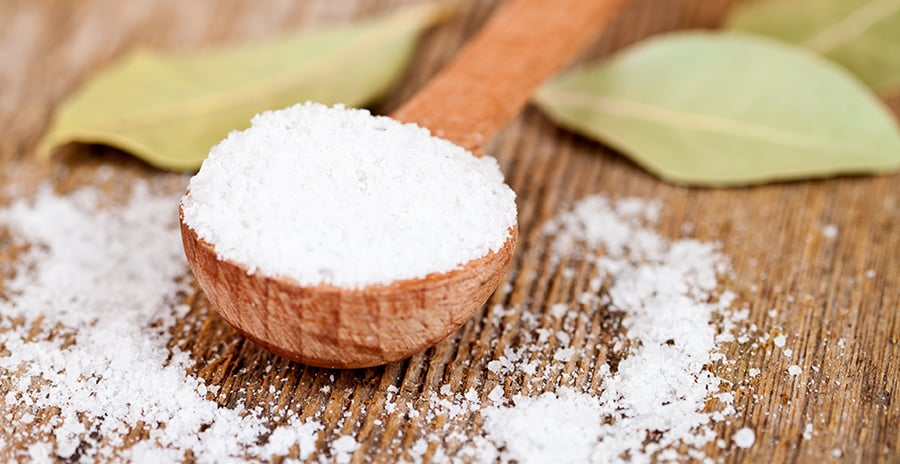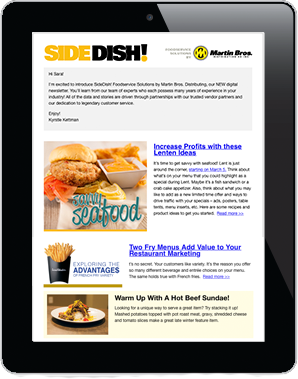
Sodium adds flavor and texture and functions as a preservative in many foods. It is found in processed foods, foods you add salt to during cooking and foods you add salt to at the table. However, you must be conscious of how much you are serving and consuming.

1. Read nutrition facts for information on sodium content, choose foods with lower sodium (no added salt canned vegetables, low sodium soups and broths, plain rice and noodles, etc.) and avoid or limit foods high in sodium.
2. Consume fresher foods such as fresh or frozen vegetables (no sauce added), lean meats, skinless poultry and fresh seafood.
3. For flavor without salt, use salt-free seasonings and add spices/herbs (garlic powder, basil, oregano, thyme, etc.) and/or acids (vinegar, lemon/lime juice, etc.).
4. Check out Martin Bros.’ wide variety of lower-sodium products, fresh/frozen fruits and vegetables and salt-free seasonings.
5. Contact a Martin Bros. representative for recipe ideas and cooking techniques to reduce sodium.
Foods high in sodium include: breaded meats, processed/salted/smoked meats (ham, bacon, hot dogs, bologna, etc.), cheese, convenience foods such as boxed mixes (rice, macaroni and cheese, instant noodles, etc.) and frozen dinners, snack foods (chips, crackers, pretzels, etc.), condiments (ketchup, salsa, soy sauce, etc.) and canned items (vegetables, meats, soups, etc.).










